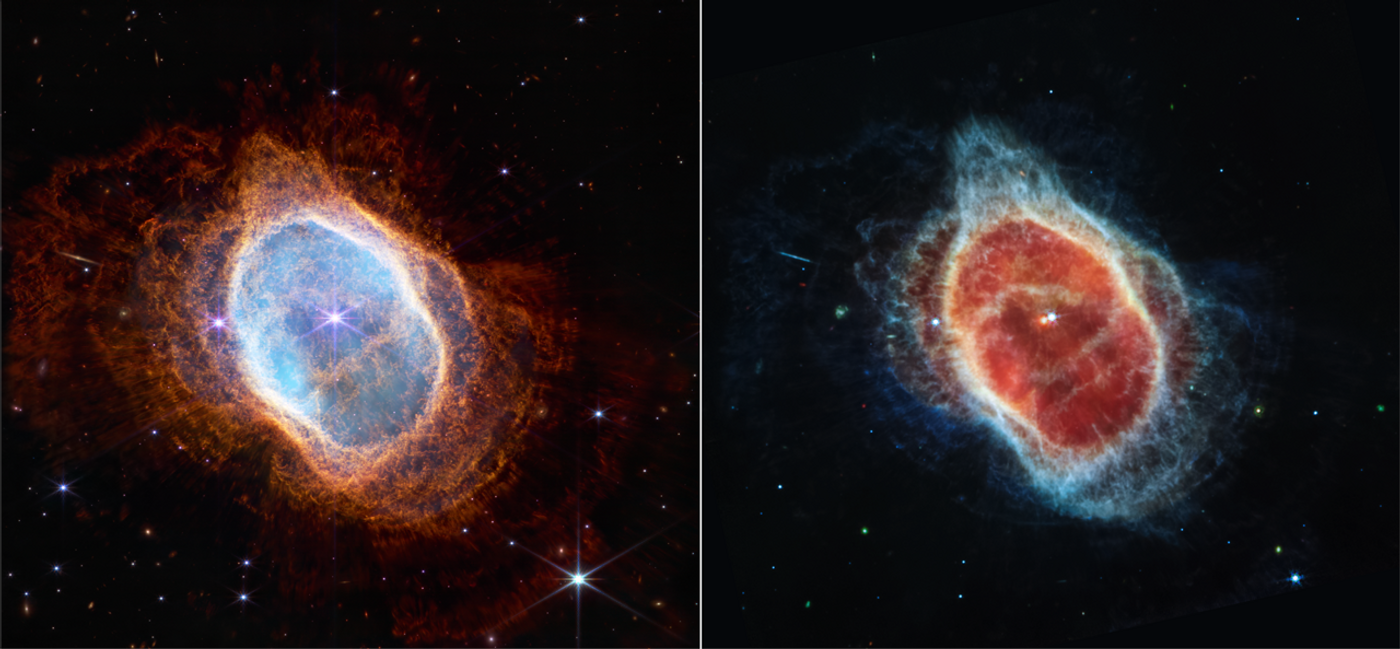UVEX: Exploring the Cosmos in Ultraviolet Light
NASA’s James Webb Space Telescope (JWST) continues to send back breathtaking images of the cosmos, to include planets in our solar system, exoplanets, and supernovae, using its powerful infrared instruments. However, the famous space agency is preparing to launch another powerful space telescope to explore the cosmos, but this time using ultraviolet light, and is appropriately called UVEX (UltraViolet Explorer), which was previously selected in 2022 for further evaluation as part of NASA’s Medium-Class Explorer program and is currently scheduled to launch no earlier than 2027.
Southern Ring Nebula taken in near-infrared light (left) and mid-infrared light (right) by NASA's James Webb Space Telescope. (Credit: NASA, ESA, CSA, STScI)
“NASA’s UVEX will help us better understand the nature of both nearby and distant galaxies, as well as follow up on dynamic events in our changing universe,” said Dr. Nicola Fox, who is the associate administrator for the Science Mission Directorate at NASA Headquarters. “This mission will bring key capabilities in near-and far-ultraviolet light to our fleet of space telescopes, delivering a wealth of survey data that will open new avenues in exploring the secrets of the cosmos.”
Along with providing breathtaking, ultraviolet images of the universe, UVEX will also be tasked with studying metal-poor distant galaxies and hot stars that existed in the early universe. But the most impressive task for UVEX will arguably be its ability to conduct an all-sky survey, as the future space telescope’s ultraviolet capabilities are 50-100x better than NASA’s Galaxy Evolution Explorer (GALEX) space telescope, whose missions lasted between 2003 and 2013 and studied the origin and evolution of galaxies throughout the cosmos.
“With the innovative new UVEX mission joining our portfolio, we will gain an important legacy archive of data that will be of lasting value to the science community,” said Mark Clampin, who is the director of the Astrophysics Division at NASA Headquarters. “This new telescope will contribute to our understanding of the universe across multiple wavelengths and address one of the major priorities in Astrophysics today: studying fleeting changes in the cosmos.”
As noted, UVEX is part of NASA’s Explorers Program, which is the oldest and longest running program in the space agency’s history, having started in 1958 with the launch of the Explorer 1 spacecraft. During its tenure, the Explorers Program has launched more than 90 missions with the goals of better understanding both our Earth and the vast cosmos.
How will UVEX help scientists better understand the cosmos in the coming years and decades? Only time will tell, and this is why we science!
As always, keep doing science & keep looking up!
Sources: NASA, Caltech, NASA (1), NASA (2), Wikipedia, NASA (3)









